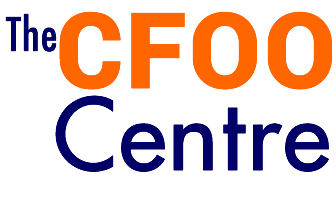The use of debt by organisations signals both financial strength and the willingness to take on financial risk. If the return on debt-financed assets exceeds the cost of debt (i.e. Rd>Kd), debt use will increase income and therefore the asset base and the net worth of the organisation. However, increasing the use of debt also increases the financial risk that organisations face (including the risk of bankruptcy) if the organisation’s revenues and profits are lower than expected.
Debt is not bad but in times of over-leverage, companies must have a good strategy for efficient and effective debt reduction. Debt, to a certain level (and depending on an organisations size and cash flows), is good because of the tax relief debt offers. For example, in simplistic terms, KES 100 of debt at a cost of 13%, actually costs the company KES 9.1 (KES 13 less 30%).
Further, achieving growth for organisations without debt may be virtually impossible given the overall margin levels and internal cash generation.
CEO’s and Boards have different risk preferences, or inclinations to take on certain levels of risk, and an organisation’s debt level is a business decision made between the CEO, the Board and the financial institution or other providers of debt capital. However, decisions regarding the use of debt at the organisation operational level can have negative implications for the organisation.
Against a backdrop of the recent general election period in Kenya and other East African countries, the rise in commodities and raw material pricing, the rise in the cost of energy and the rise in certain taxes, many East African corporates have been confronted with high and unsustainable debt levels. The issue of conceiving and implementing debt reduction strategies is becoming one of the great interest points to CEO’s as well as the Boards’ of many organisations in East Africa. There are several options which we have briefly shared below by which these organisations could effectively reduce debt levels.
Bankers, lenders (and investors) typically look at a company’s Balance Sheet as an indication of its financial fitness. The company Balance Sheet illustrates its capital structure. Capital structure is a term that deals specifically with a company’s debt to equity ratio (the gearing ratio).
Debt to equity ratio illustrations
Different organisations have different appetites for debt and nothing can be generalised about debt-equity ratios. Nevertheless, consider the following:
- A debt-equity ratio of 0.5 to 1.0 is considered to be a good ratio. If Company X has a long term debt of KES 10 million and has KES 10 million in equity, the debt-equity ratio is 1.0 (10 / 10 = 1.0). This ratio falls well within acceptable debt-equity ratios.
- If Company Y has long term debt of KES 10 million and has KES 1 million in equity, the debt-equity ratio is 10.0 (10 / 1 = 10.0). This ratio is way too high for most bankers, lenders and investors to feel comfortable. This company is debt-laden.
- If Company Z has long term debt of KES 10 million and has KES 20 million in equity, the debt-equity ratio is 0.5 (10 / 20 = 0.5). This ratio will be looked upon favourably by investors because the company has little debt compared to its equity.
The debt to equity ratio has always been an important consideration for bankers, lenders and investors. This ratio offers one of the best pictures of an organisation’s leverage.
Managing capital structure is a balancing act that requires financial flexibility and fiscal discipline. Achieving a balance of debt and equity has been one of the biggest challenges to many organisations in East Africa, and it will remain a big challenge. The long term impact of capital structure means managing operating cash flows and the cost of capital. The interest exposure on debt is tax-deductible, and organisations can reduce their after-tax cost of capital by increasing debt relative to equity.
The options/strategies
- Reduce earnings volatility.
- Enhance product pricing and customer mix.
- Streamline product lines.
- Accelerate the growth of high potential products.
- Manage the costs of operations.
- Improve the management of working capital.
- Put in place internal credit rationing strategies.
- Put in place, pecking order strategies.
- Restructure outstanding debt obligations.
The CFOO Centre team has been working with organisations in Kenya, Tanzania and Ethiopia to help them make the changes needed to reduce and optimise debt levels. Indeed, the potential harm to a company’s operations and business strategy from a bad capital structure is greater than the potential benefits from tax and financial leverage. Instead of relying on the capital structure to create value on its own, companies should try to make it work hand in hand with their business strategy, by striking a balance between the discipline and tax savings that debt can deliver and the greater flexibility of equity.
We have recently helped organisations build a lasting advantage by challenging the status and looking beyond the obvious to find solutions.
Contact The CFOO Centre Limited to assist in your organisation’s debt reduction strategies.
www.cfoocentre.com
rajeev@cfoocentre.com
+254-736-515-168 and +254-736-714-190


